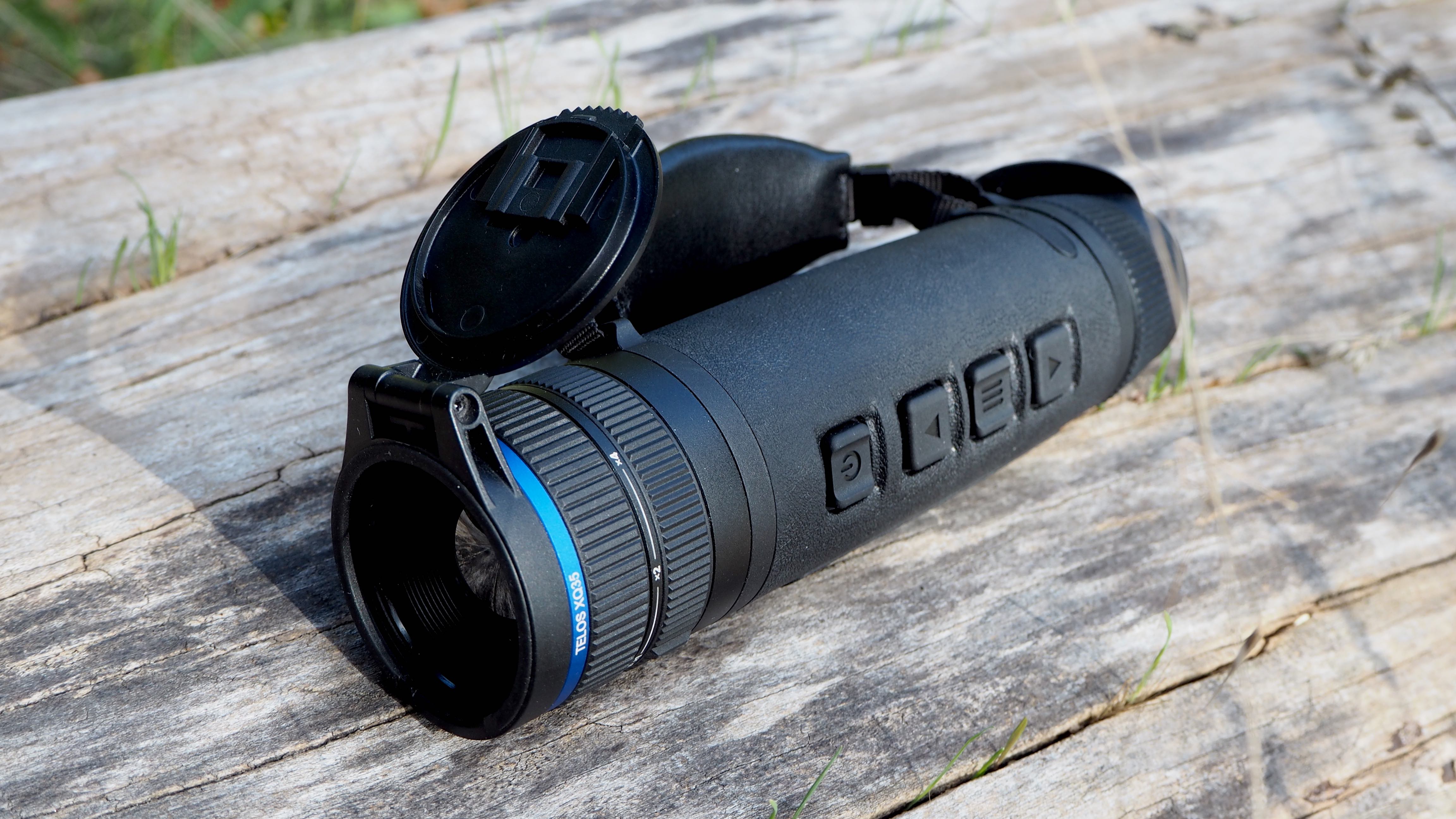
Yes, there are various brands of night vision goggles available and, as a step up in terms of tech and price, even thermal-imaging binoculars – the latter via Pulsar itself. But a thermal imaging monocular, specifically the Pulsar Telos XQ35 we’re examining here, is even more niche and specialist.
If you’re asking ‘why would anyone opt for a monocular rather than a binocular?’ the typical answer is that they’re more portably convenient, plus, as a broad rule of thumb, less expensive. Though hardly budget-priced, the Telos XQ35 could be viewed as a cost-effective way of getting hold of such tech.
So, if you want to bring the faraway closer, yet feel a thermal imaging binocular is more than you actually need, a monocular is certainly worth considering as an alternative.
Be aware that in terms of a thermal imagining monocular, Pulsar offers both the Telos XQ35, as reviewed here, plus the Telos LRF XQ35. The letters ‘LRF’ indicate the further addition of a laser rangefinder to an already comprehensive specification list.
In being a thermal imaging binocular, the appeal of the standard Telos XQ35 is as a device that will help us better observe subjects and skittish creatures day or night by picking up on their heat signature, thus allowing us to pinpoint something or someone even when they may be partially obscured by undergrowth or a made-man distraction.
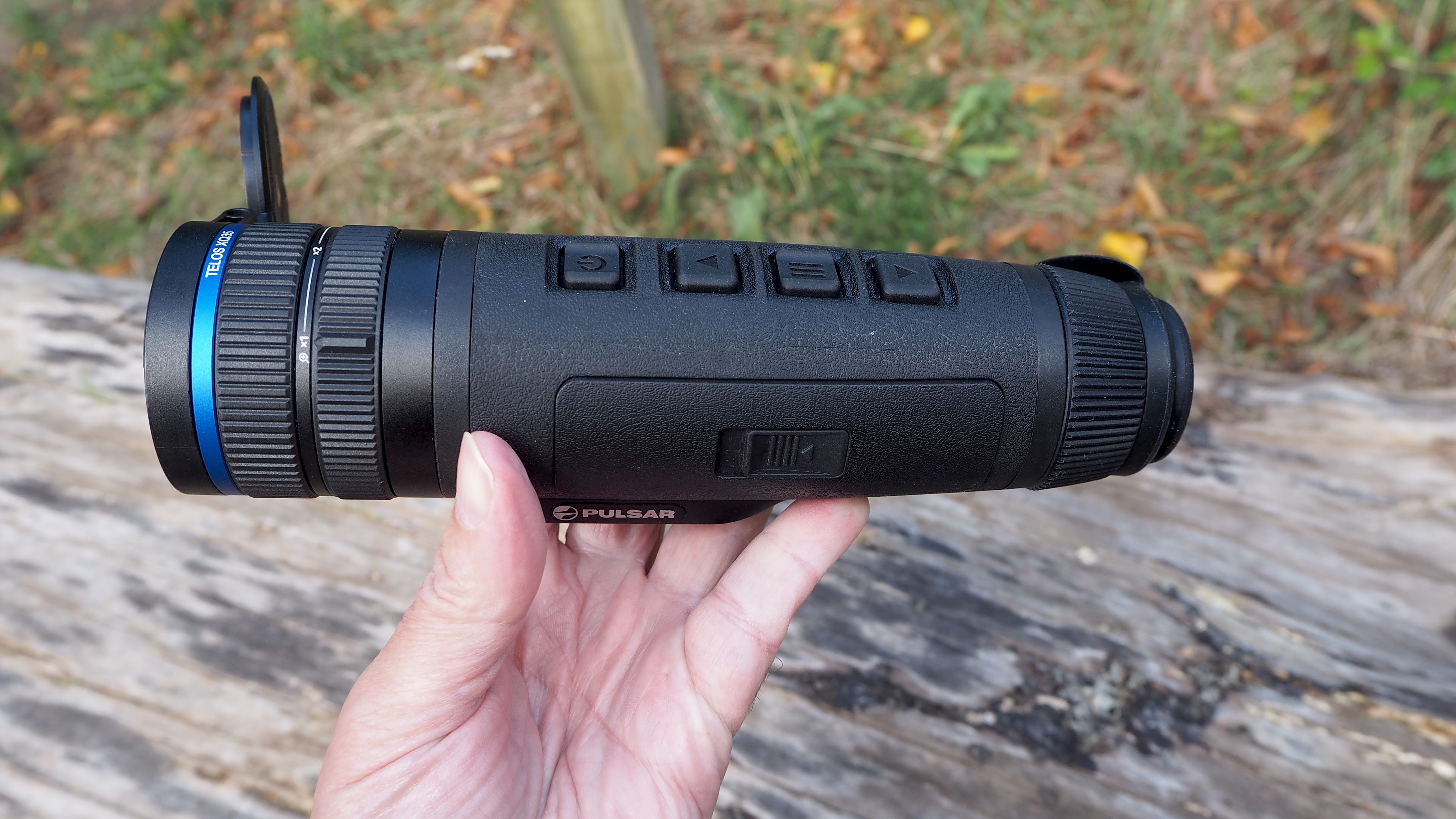
Pulsar Telos XQ35: Specifications
Pulsar Telos XQ35: Key Features
Featuring a core 3x magnification that can be digitally boosted to the equivalent of a maximum 12x, plus 35mm objective lens size and a 384x288 pixels sensor resolution, unusually, the Pulsar Telos XQ35 thermal imaging monocular features 64GB of built-in storage. That’s impressively generous compared to the 16GB of internal storage offered by the recently reviewed Pulsar Merger XP35 binocular at twice the cost, with in both cases the ‘35’ indicating a respectable 35mm objective lens size. As anyone with a passing interest in binoculars or monoculars knows, the larger the objective lens theoretically the more light is let in, and so the brighter and clearer the image in our eyepiece.
Unlike a standard binocular or monocular, however, the Telos XQ35 is useless without its battery. When the device is switched off, we don’t get anything but blackness if we remove the usefully tethered lens cap and put an eye level with the eyepiece. It’s only when we switch it on that the monocular shows us what it’s capable of.
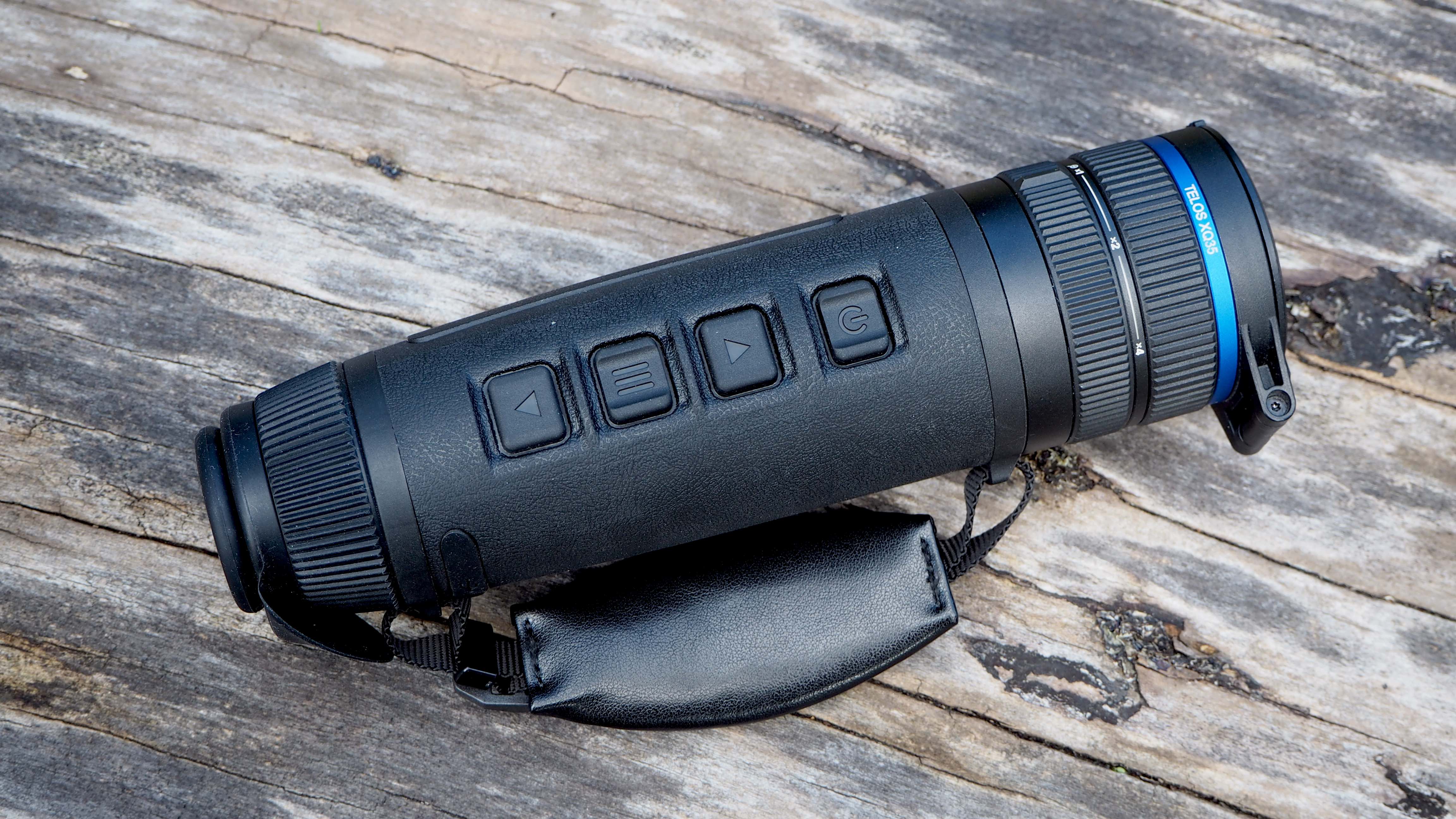
Like Pulsar’s Merger XP35 thermal imaging binocular, this monocular alternative affords us the extra of being able to capture photos in JPEG format and 1024x768 videos in MP4 format of whatever we’re viewing when everything is powered up. Again, anything recorded needs to be accessed via a free-to-download Stream Vision 2 app from the manufacturer, as there’s no slot for a removable media card as a way of expanding upon the internal memory. With Wi-Fi integral to this device, the app also allows a smartphone to act as a remote control to affect changes on the monocular in real-time, should we wish to do so.
Designed to be used primarily in the great outdoors, impressively we’re told the monocular can be used in temperatures as extreme as -25°C to +40°C.
Pulsar Telos XQ35: Design & Handling
In being a monocular with, in effect, a built-in computer, inevitably the Pulsar Telos XQ35 is a fairly chunky beast. The plus side in terms of handling is that the Lithuania-made thermal imaging monocular feels reassuringly robust and solid when gripped, its 430g weight helping it sit sufficiently level and steady in our palm. This helps avoid any visible image judder when using it handheld, while it’s possible to additionally rest/support the eyepiece against our eye socket, or spectacle lens.
On top of this, its maker has found room to provide a standard 1/4-inch screw thread on its underside, should we wish to employ a travel tripod or similar for added stability, or just for a more comfortable viewing experience if using the device for extended periods of time.
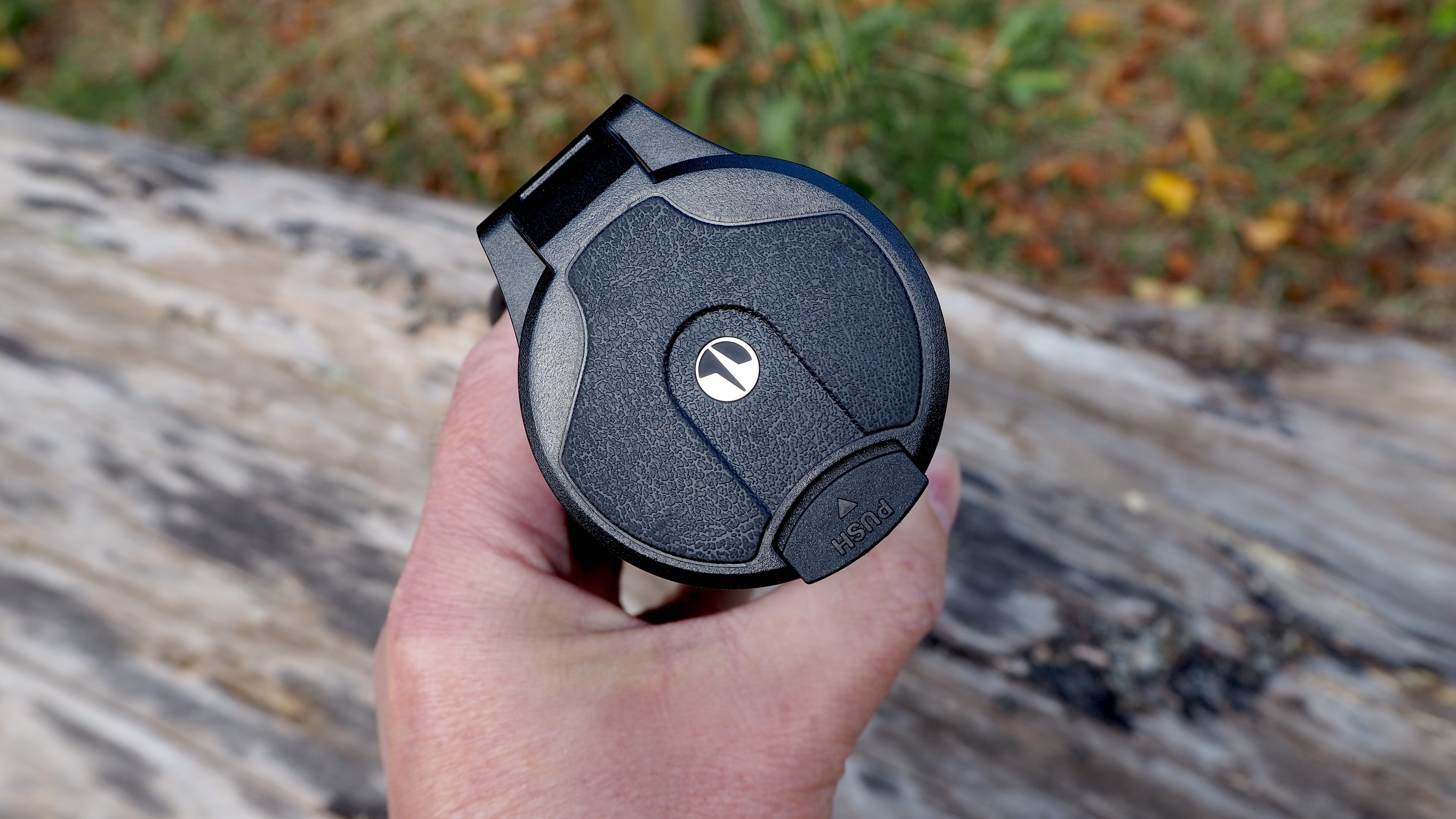
Just as with the Pulsar Merger XP35 binocular we reviewed previously, the four main operational controls on the Pulsar Telos XQ35 thermal imaging monocular prove sufficiently sparse to avoid confusion when fumbling for them in the dark, while at the same time being almost toy-like in their simplistic chunkiness. Not that anyone is going to be paying the price being asked here and expecting ‘my first monocular’ in return.
Because of the paucity of controls on this device, however, there is not an obvious button for the taking of photos and videos, as is provided on the XP35. So to us, it feels a little less intuitive from the off if you want to go beyond merely observing or zooming in and out.
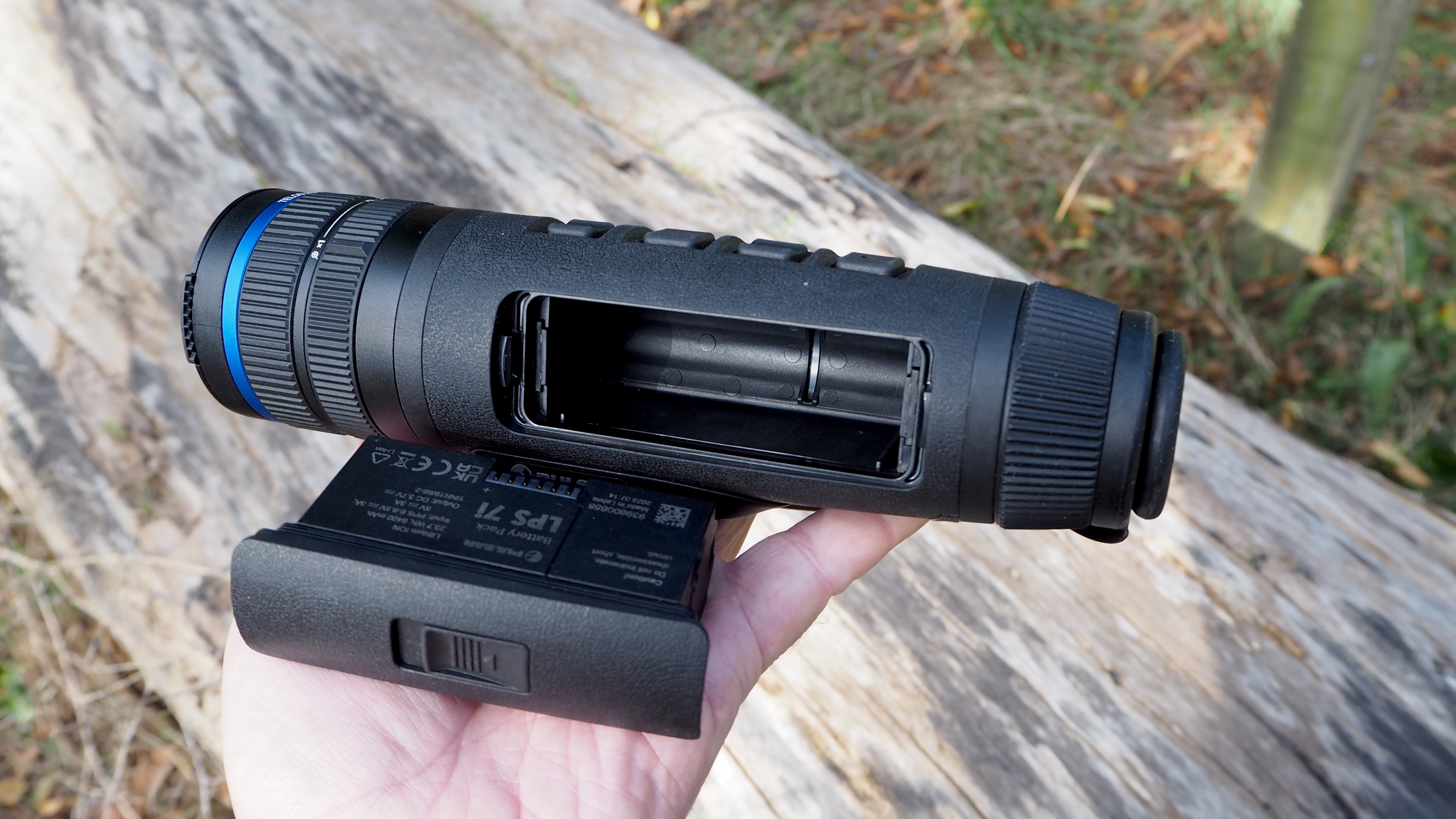
When using these binoculars in the great outdoors, as we inevitably will, it’s worth knowing that we’re offered an IPX7 level of waterproofing. This translates as it being able to be submerged in water up to a meter in depth for up to 30 minutes without suffering irreversible damage. That said, as the USB port is ‘protected’ by a mere thin rubber strip, we wouldn’t want to test that out in practice.
Slightly better protected behind a sliding latch mechanism is the internal rechargeable battery. This is removable, yet needs to be charged up within the device itself, for which a USB lead and UK mains plug are helpfully provided. We’re told that up to eight and a half hours of usage can be had from a fully charged cell, enough to see us through most of the night if in constant use.
Pulsar Telos XQ35: Performance
Press and hold the spongy rubber power button located just behind the main lens focus and second digital zoom adjustment ring and the unit powers into life with a pleasant physical shudder and whirr of electronics.
As with other see-in-the-dark devices, we’re initially presented with a grainy black-and-white image that here resembles something from a low-resolution security camera. We can enhance details by turning the focus wheel at the front, obviously, but also fine-tune the image by rotating the equally stiff dioptric adjustment ring just forward of the eyepiece at the back. So far, so intuitive to use.
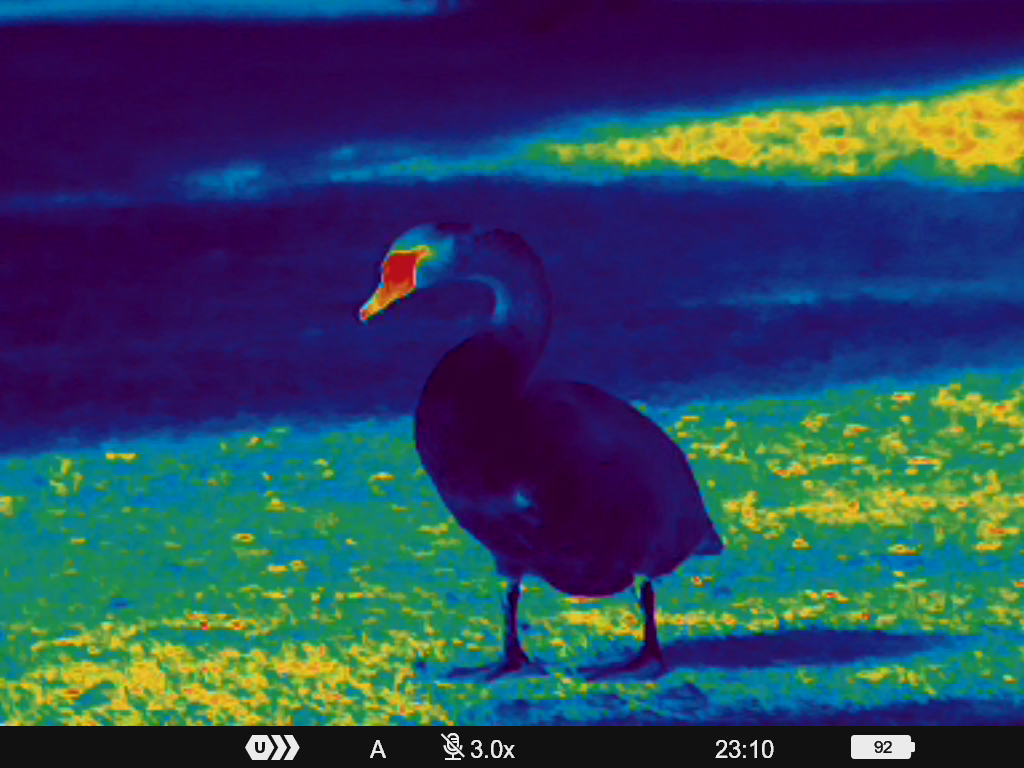
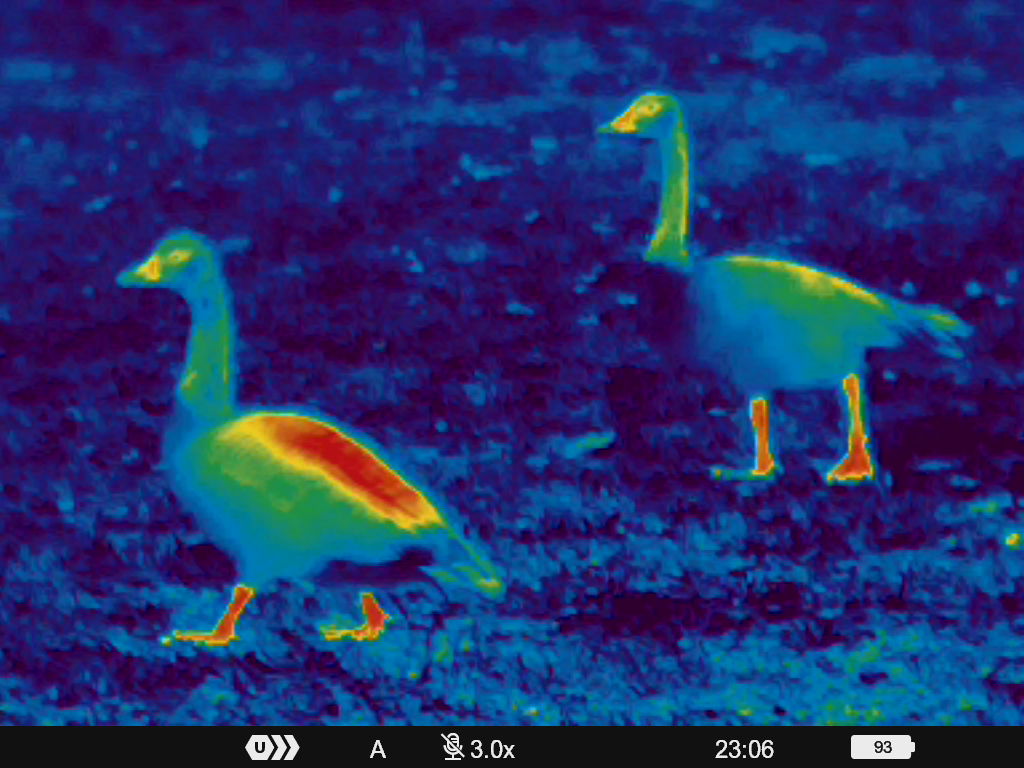
Squeeze and hold down the menu button, which sits between ‘up’ and ‘down’ mode buttons denoted by a familiar front or back facing triangle, and as on the Pulsar Merger XP35 binocular we can switch between a ‘White Hot’ monochrome view of our subject matter to several other options that may be easier on the eye, as well as better divulging the visual information we’re after. Alternatives include ‘Black Hot’, ‘Red Hot’, Red Monochrome, the lightly trippy Rainbow, along with Ultramarine, Violet, or Sepia. We found switching between them was less tiring on the eyes than sticking with one viewing option the whole time.
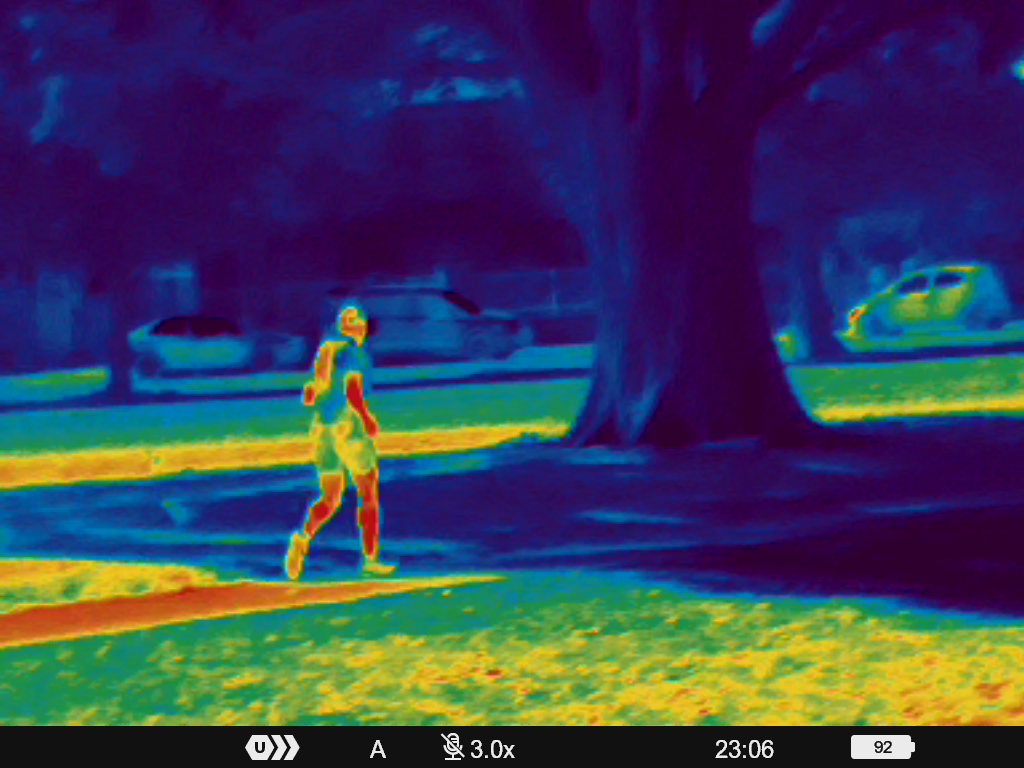
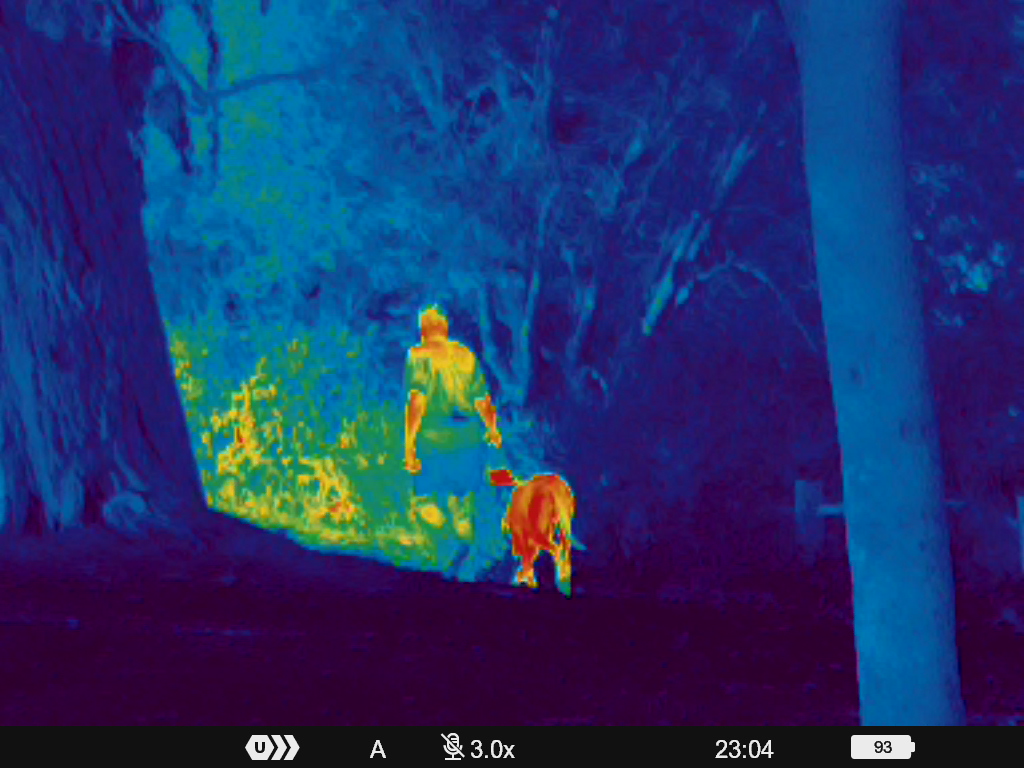
Slightly confusingly at first, the up and down mode buttons variously double up as record buttons for photo or video capture, switching between such settings depending on how long or how short you press them down for. On a cold night, in the dark, we felt it would be better to have a separate dedicated record button. As it is, this aspect of the setup feels unnecessarily fiddly and distracting, when the subject under observation should be our complete focus, no pun intended.
Pulsar Telos XQ35: Verdict
Thick and chunky compared to what we’d typically think of as a monocular thanks to all the extra tech packed on board, the Pulsar Telos XQ35 thermal imaging monocular feels reassuringly robust and solid in terms of its construction, sitting commendably steady and level in the palm, thanks also to the provided handgrip/ strap.
Incidentally, if this ‘regular’ Pulsar Telos XQ35 thermal imaging monocular isn’t already feature-crammed enough, then also consider the Telos LRF XQ35 monocular. As noted earlier, those extra letters ‘LRF’ denote a built-in laser rangefinder for those for whom determining the distance between themselves and their subject is vitally important.
Ultimately, while not inexpensive, the Pulsar Telos XQ35 monocular is one of the more affordable solutions for those seeking a relatively compact thermal imaging device that delivers the goods without too severely breaking the bank.
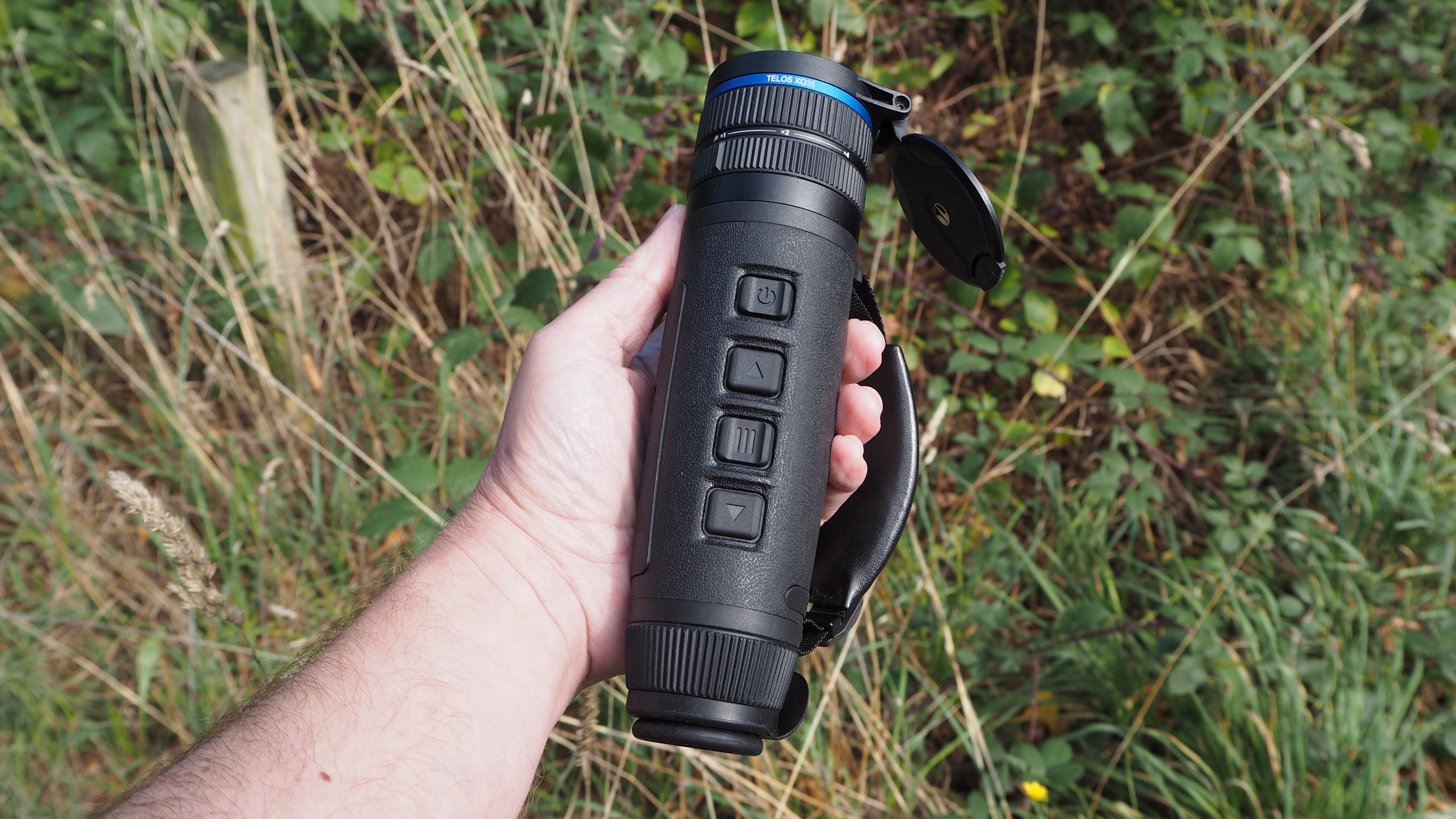
Alternatives
As likewise noted during our write-up of the Pulsar Merger LRF XP35, if it’s a tool for night vision you’re wanting rather than introducing the extra level of detection afforded by thermal imaging technology, then, while you’ll still pay a premium over regular daytime-use binos or monoculars, there are more affordable examples from brands including Bushnell, Bresser, Nightfox and Solomark, among others.
They’ll also prove less of a learning curve than using something like the Pulsar Telos XQ35 here, as operationally they’re closer to a standard binocular or monocular. That said, none of these alternatives is going to allow us to pick a subject out from its surroundings thanks to detecting its thermal signature alone, which is why the XQ35 costs the premium that it does.
As a further alternative, a trail camera is another single lens incorporating option for covert surveillance, especially if you’re seeking to observe skittish creatures not just at night, but also remotely so you don’t have to be out in cold and dark yourself. These have also steadily got more high tech. For example the Stealth Cam Fusion Cellular that, as it sounds, can be hooked up to a chargeable data plan so that whatever it captures can be likewise sent to your mobile device via an app.
In conclusion if it’s a tool for covert operation you’re after, then there are more affordable examples than the Pulsar Telos XQ35 thermal imaging monocular. However if a device with all the bells and whistles including thermal imaging that lets you ‘see’ through dense fog, rain and snow really is a must, then this is nevertheless currently one of the more affordable choices, despite a relatively high price tag for the uninitiated.







